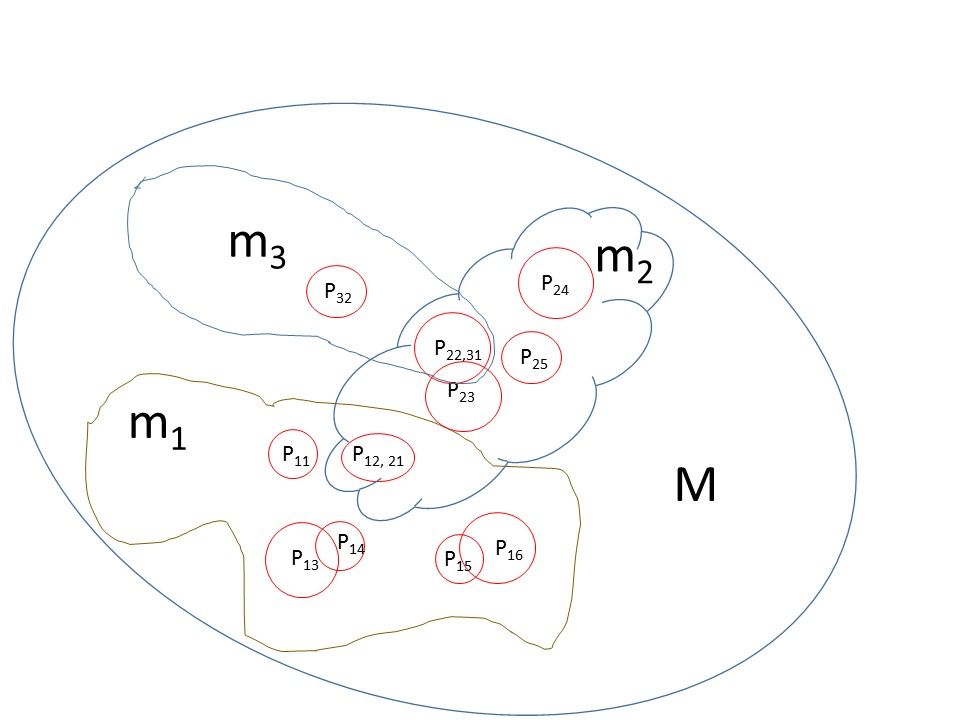Intuitively, measuring if the tenets of weak sustainability have been successfully applied to a system should be easier than measuring if strong sustainability is in action. However, identifying indicators that measure weak sustainability has been an elusive task. There is a long history of attempting to measure whether or not a country is moving to an ideal of economic and social development. As environmental deterioration has become a more important concern, this dimension has been added to the list of items that the ideal society must "optimize."
We can approach this problem by attempting to solve a system of problems that can be called a mess. How do we measure if we are any closer to solving a mess?

From the systemic thinking perspective, we have a large mess (let's call our mess "M" - or weak sustainability) in which three mutually interconnected smaller messes (m1, m2, m3, ...) co-exist. These three messes contain a large number of individual problems (p11, p12,... pmn). The best solution to each of these individual problems may or may not result in the best global solution for m1-m3 and are not necessarily the best solution for M.
Therefore, individual indicators (i.e., measurements of how close we are to the individual solutions of p11, p12,... pmn) fail to measure how close we are to attaining the ideal state (i.e., weak sustainability) of the system.
Class Discussion Forum 2 - Measuring Sustainability
- Apply the analysis of a Mess to your case study by breaking down your case study (M) into individual problems and group problems into several Mess units (m1, m2, ... mn). Then find the connections that may exist among individual problems within a Mess (mn). Draw and post your analysis into the class forum with a brief explanation of your analysis.
- Create a list of ten measurements for sustainable development for your case study: include measurements of items for all three part of the sustainability triad and state how these measurements are related to each other. Create a quantitative score system for each measurement. For example, what would a score of "0" measure? How about a score of "10"? Explain if and why a quantitative score may be a valid way to measure the items you chose to optimize, and list the pitfall in evaluating sustainability using the method you followed. You can organize this information in a table format.
- Comment on at least two other posts, following previously stated guidelines.
Important: Summarize, summarize, summarize. The goal of these forums is not to produce full papers. But, we want to create well thought-out discussions in which your post have already fully "digested" the readings, text/video in the course's website, and are ready for public consumption!
